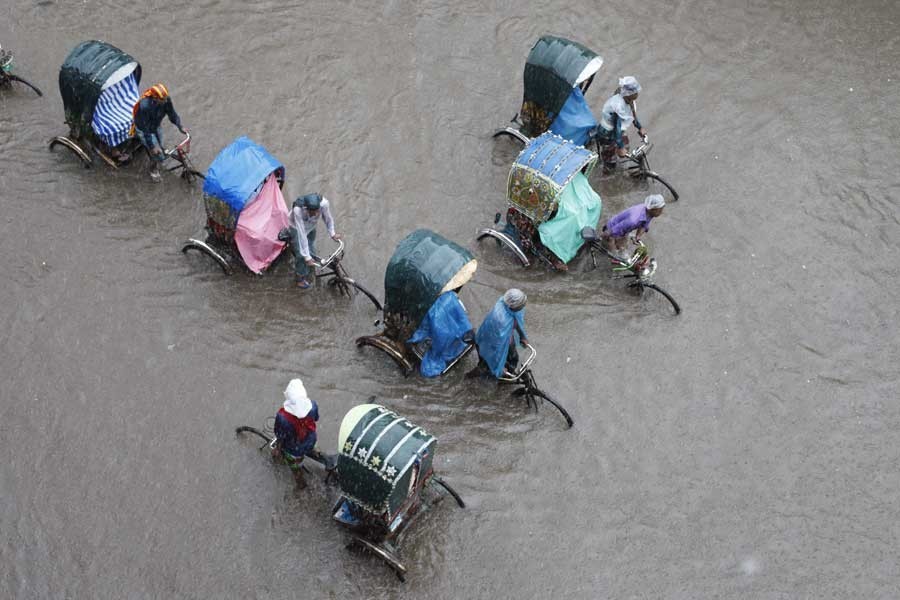With the onset of the monsoon, the now-perennial scourge of water-logging has begun staging a comeback. Earlier, the disruptive monsoon fallout would remain limited to the capital Dhaka before spreading to the nearby smaller cities of Narayanganj and Gazipur. Even the virtually attached Tongi and Keraniganj are not spared these days. Over the last two decades, the port city of Chittagong, too, has been going through the ordeals of monsoon water-logging similar to Dhaka. According to media reports it appears that few of the country's 12 city corporations and 327 municipal corporations can manage to remain free of the water-logging menace. The metropolitan city corporations operate in a broader national context despite, theoretically, being part of the local government. Even in this advantageous position, the older city corporations like those of Dhaka, Rajshahi, Khulna, Chattogram and a few others, find themselves perplexed in coping with water-logging. In comparison, it doesn't require much brainwork to visualise the plight of the smaller cities and towns, municipalities to be precise, in terms of the ordeals of water-logging and the accompanying disruptions to life.
The print and electronic media hardly fail to focus on the issue which has been plaguing the smaller cities in the last few decades. It is a utopian idea to expect these emerging urban centres to remain unscathed by water-logging; especially when the scourge has been playing havoc with their older contemporaries for ages. That the residents of water-logged small towns go through the same ordeals as that of Dhaka or Chattogram is now a stark reality. The crux of the matter in these episodes comprises an old practice: encroachment on rivers, canals and water bodies. Like in the big metropolises, numerous pockets of unscrupulous elements have mushroomed in the smaller cities. Since they work on behalf of local high-ups, who can wield enormous power in different sectors, the river grabbers and encroachers often become uncontrollable. The result turns out to be disastrous.
In the capital and large cities, protest rallies are held sometimes with positive results. They can at least bring the problem effectively to the notice of the authorities concerned. On account of their location in far-flung areas, small-towns largely fail to draw attention of the authorities. In many contexts, the state of water logging in many smaller municipal entities is far worse than in the country's 12 city corporations. Not that the latter have the capability to put in place prompt and effective remedies to river and canal encroachment and water-logging menaces. But their ongoing unimpressive performance notwithstanding, they can at least hold aloft a beacon of hope. Direct supervision by the higher authorities and proximity with the capital-based allied agencies can keep their dynamism alive. Such a favourable position adds in time to the capability of metropolitan entities.
Unfortunately, people in smaller urban set-ups are deprived of these opportunities. They at times find themselves going through water-logging and other maladies virtually unattended to. There seems to be none to stand beside them. A national development-cum-welfare perspective cannot be ensured with great chunks of the population being left out.


